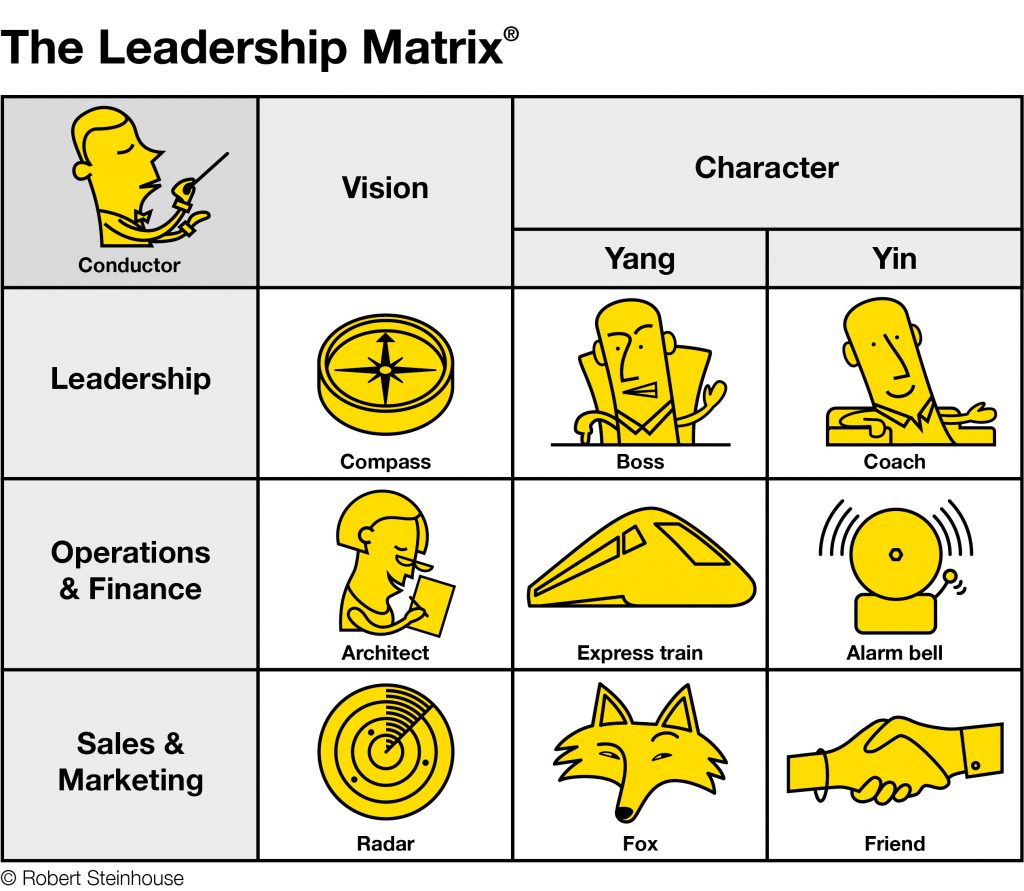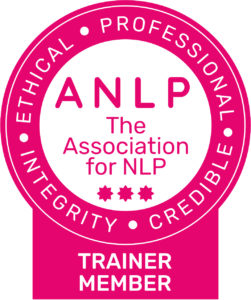Leadership Shadows: How Vision Can Derail the Career of Leaders
In my model below, The Leadership Matrix, each character, or Archetype, represents a positive business energy. At the same time, each Archetype also has its own unique Shadow, or problematic manifestation.

Last week I concluded that being truthful to yourself, especially on your weak spots, is an essential self-critical quality leaders need to maintain their success. This week I postulate the dangers of becoming overly focused on vision and losing interest in the business itself. I will explain how this can affect aspects of the leader’s personality which has the potential to derail their career.
The Compass Archetype
The Compass is the classic understanding of what the word ‘vision’ means in a leader. It is the ability to hold a vision that others can share and buy into, and the ability to create a culture which has the correct balance of values to engage and energise the workforce and the wider world.
Vision also includes stewardship; ensuring the leader preserves the business for the benefit of the staff and the wider stake holders – they don’t take excessive risks or avoid taking action when needed. It is the quality in a leader that is compelling, and people want to follow them. Often it involves a deep intellectual and spiritual journey for the leader to truly discover themselves, who they are, and what is important to them. This inner leadership is an essential first stage of being able to define themselves and their own mission, so that they then can form a clear picture for the organisation and galvanise others around that picture.
This initial part of the leadership journey is one of exploration. Leaders are seekers and you may be surprised by how some executives at the world’s leading companies have done far more esoteric studies than you might expect: shamanic retreats in South America; yoga and meditation in India along with a host of therapeutic style workshops. Along with this goes a diet of audio and reading material that often preaches a zen like world of infinite bliss with no material possessions, which leads neatly onto…
The Shadow of The Compass – The Hippy
The Hippy is the inevitable companion of the Compass. As the leader enters this new and exciting phase of their life, they can begin to find the mundane day-to-day activities of a business tedious and become totally focused on their latest book or the latest workshop they attended. This can begin to produce a reaction from their hard-working direct reports that they have lost interest in the business and have become deluded and uninterested in their needs. A diet of changing mission and value statements as each new leader appears can really alienate hard working staff and create a culture of hostility and cynicism towards these activities. The Hippy is likely to become condescending and angry at this reaction, perhaps seeing their staff as ungrateful peasants unable to grasp the bigger picture. Sadly, this can lead to demotivation and a feeling of futility, rendering the essential qualities of the Compass redundant.
According to Ken Wilber, a philosopher who is very interested in developmental psychology, it is important for people on a journey of personal growth to “transform and include.” Ken Wilber also noticed that as people evolve as individuals, they tend to ‘hate’ the person they ‘used to be’ for about 18 months. A common path of personal growth is to dislike the values and lifestyle you had, change in an extreme way and then after about a year and a half, return to a state of greater acceptance of your old self so you can include the benefits of your previous wisdom, i.e. transform but you can now include ‘the old you’. This natural journey has the potential for huge dangers for the uninitiated, as they may sabotage their career before they have let the new wisdom sink in.
Understanding your shadows and keeping The Hippy at home
Understand that Shadows are a natural feature of having an Archetype – If you have big vision you will also have a big Hippy. This is an essential lesson for the leader. Once you understand this, it means that you will have to manage and contain your Shadows as part of the gift of having this vision. You can ‘feed’ your Hippy outside of the business but do ‘leave it at the door in the morning’ as much as you can.
When you can also anticipate your reaction for those first ’18 months’ and hide the excesses of the Hippy from your team, while gently doing some subtle experiments to learn to use this new material, you will survive this necessary phase in your career.
Leaders are also managers and they still need to manage ‘mere mortals’ who are probably entirely focused on getting their work done, often overwhelmed by this work. A brief segue into the meaning of life might be tolerated, but beyond that it is likely to breed resentment.
“Be the change you wish to see in the world”
As Gandhi said, “The wise should not bewilder the ignorant.” However, the enthusiasm for this more stimulating material can sway the leader to lose their ‘common touch’ and venture forth into visionary lectures alienating and demotivating their exasperated team members. My advice is yes vision is important, but like a catalyst: not much is needed, and not that often – but without it no energy is created.
Quoting Gandhi again, “Be the change wish to see in the world.” The best way for a leader to impart this visionary message is for them to act as a role model – show don’t tell.
Tread lightly and create specific leadership focused times such as the occasional away day, where straying into the big picture doesn’t seem to discount the hard work your team are doing. But do stay focused on where you are all going – that is the job of a leader.
Don’t forget: I will be teaching this model on our Leadership Coaching with NLP webinar on 25th August. You can book your place now.
Did you like this post?
Then check out our events and courses!
Where to find us
For posts, events, free open days and more, follow NLP School on:
Where to find Robbie
Twitter: @RSteinhouse
LinkedIn: Robbie Steinhouse
What to read next
Leadership: The Capability Sets
Leading Yourself Through Uncertainty








